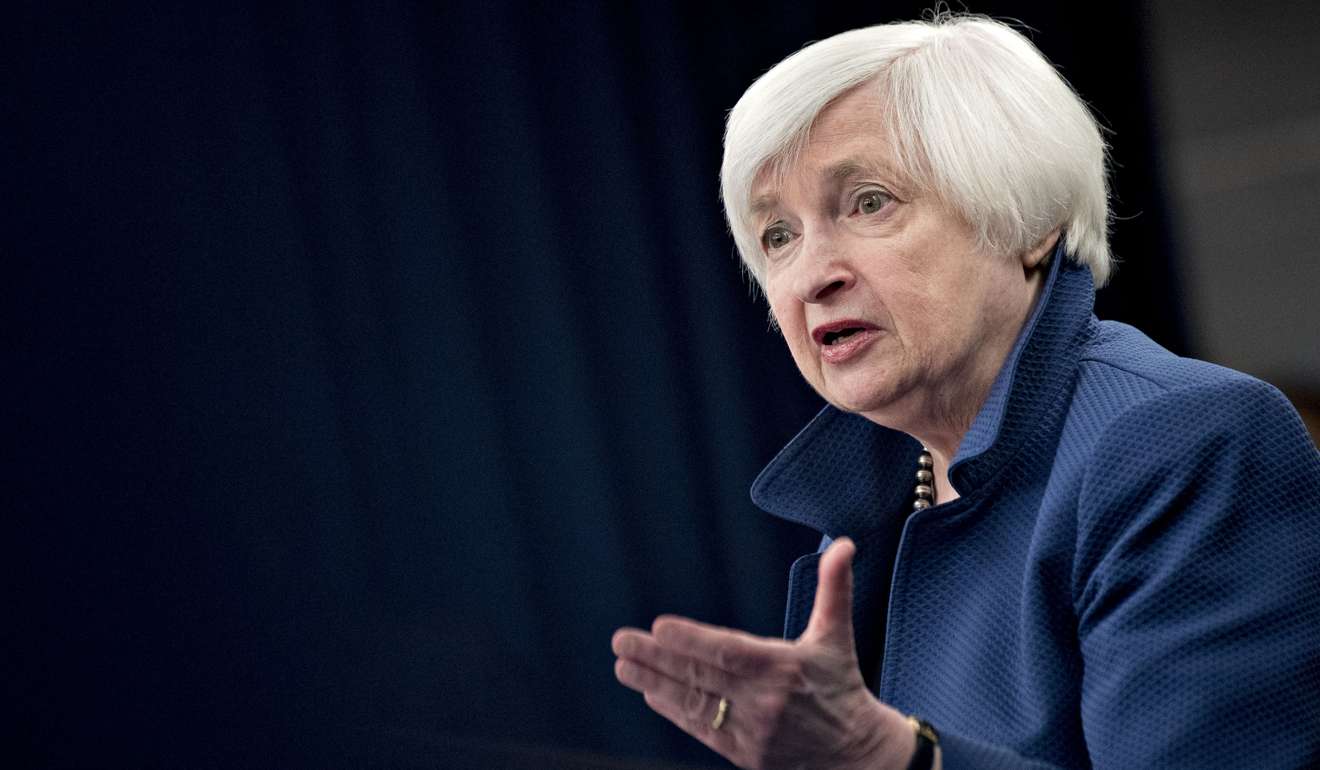
Fed has good reason for balanced approach to rate rises
“The simple message is the economy is doing well,” said US Federal Reserve chairwoman Janet Yellen on Wednesday after the Fed announced a 25 basis points rise in US interest rates. Yet the dollar promptly sold off and the yields on US Treasuries fell as markets played “buy the rumour, sell the fact.” But what’s next?
A conventional approach would suggest that the more balanced rhetoric from the Fed that accompanied the US rate rise, and resulted in the market’s post-rise position adjustment, will be cancelled out if the US economic data continues to suggest that “the economy is doing well.”
In that scenario markets would again probably look for the Fed to pick up the pace of monetary policy tightening and the dollar would rise in that wake. Indeed, Japan’s Bank of Tokyo Mitsubishi UFJ feels that it remains “very likely that the [Fed] will hike the Fed funds rate again in June.”
Investors cannot conceive of the Fed tightening to the point that it causes the [US] stock market any serious damage
Furthermore, the Japanese bank believes that if the US unemployment rate has dropped further by then, a June hike could well be accompanied by signs the Fed would then see room for another two rate rises in the second half of 2017 “and potentially four in 2018.”
That’s a very plausible argument but there are a number of counter-narratives that are worth exploring.
Societe Generale analyst Albert Edwards thinks “the Fed’s lack of verbal assertiveness means the market still cannot bring itself to believe the Fed’s own projections for interest rate [rises],” projections illustrated in the US central bank’s “dot charts”.

If the French bank’s analyst is correct then markets may continue to react to evidence of more robust US economic data by shorting Treasuries and buying dollars ahead of time but then fully or partly unwinding the trades once the Fed follows through with an actual rate rise.
In such a case, only much more hawkish rhetoric than was seen last Wednesday from Yellen would break such a cycle.
But there’s another counter-narrative that suggests that while the US economy might be doing a lot better than others, that doesn’t necessarily justify the Fed raising rates at a frequency and to a degree that might automatically be associated with an uptick in inflation to the Fed’s 2 per cent target and a low unemployment rate.
The scale and timing of President Trump’s fiscal spending plans remain a work in process. The Fed might well wish to leave some room to accommodate those
The scale and timing of President Trump’s fiscal spending plans remain a work in process. The Fed might well wish to leave some room to accommodate those.
As regards the current economic numbers, while Yellen may have characterised gross domestic product as “noisy” on Wednesday, on the same day, the Atlanta Federal Reserve revised its expectation for first quarter GDP growth down to 0.8 per cent on an annualised basis compared to its March 8 forecast of 1.2 per cent.
The Atlanta Fed’s revised forecast took into account the fact US retail sales edged up 0.1 per cent last month, which represented the smallest rise in six months, while the 0.1 per cent increase in consumer prices was the weakest since July.

There must be a question mark over how many rate increases the debt-laden US consumer can afford when simultaneously faced with rising health-care and rent costs, and with the national average price of a gallon of regular-grade gasoline having risen 51 cents from a year ago.
Wall Street might think everything in the US economic garden is rosy but the view from Main Street may be quite different. Joe Sixpack is not necessarily enjoying life.
Wednesday’s “dovish hike” by the Fed should give investors pause for thought. US monetary policy will tighten further and the dollar should be a beneficiary of that. But investors should not regard these as one-way bets. Yellen had good reasons to take a balanced approach last week.

